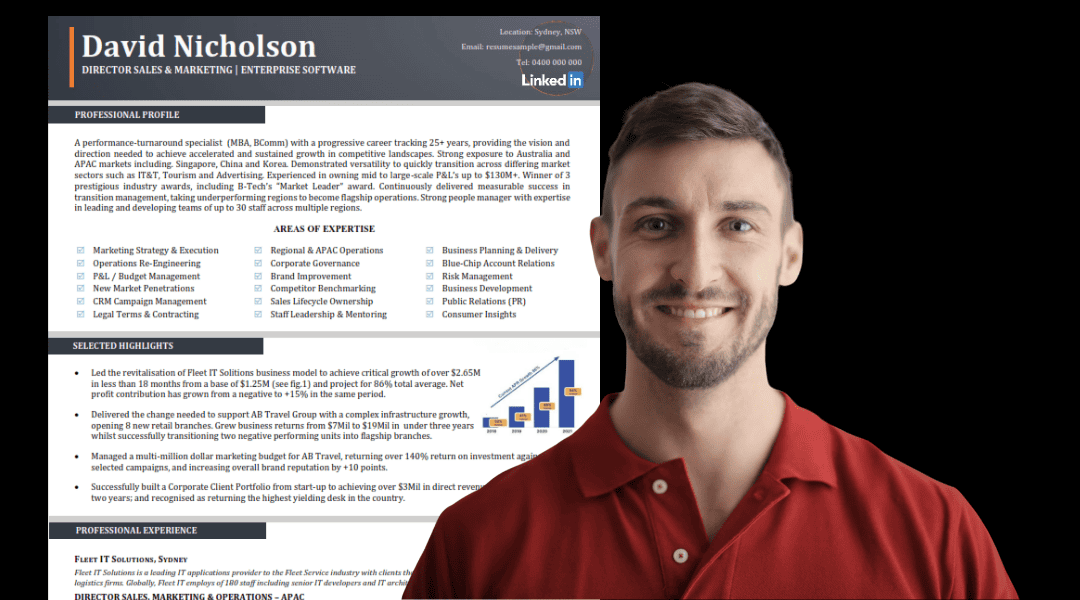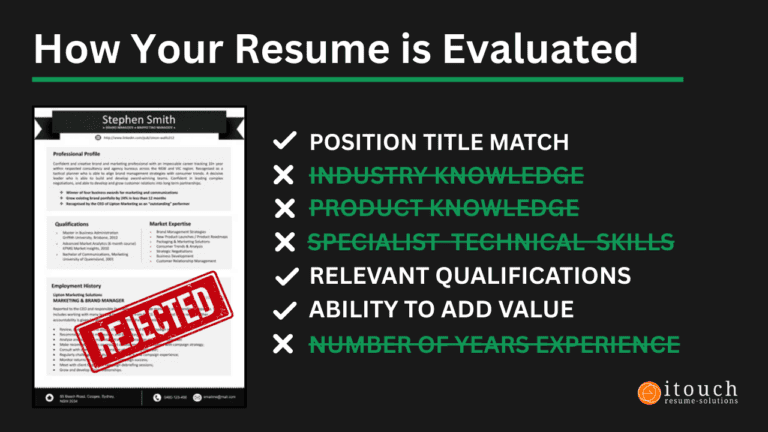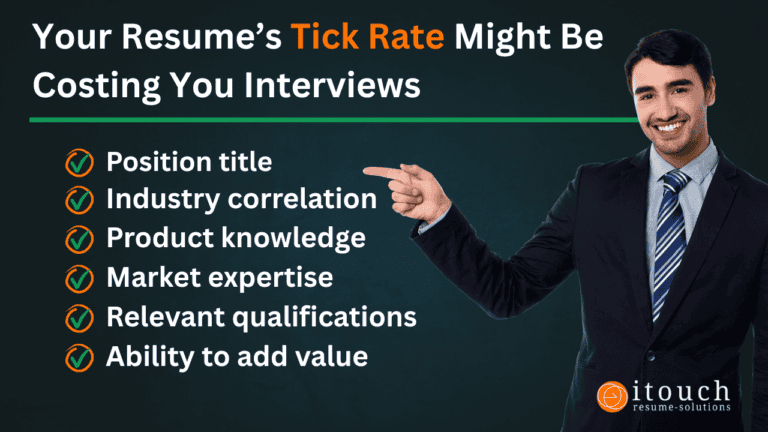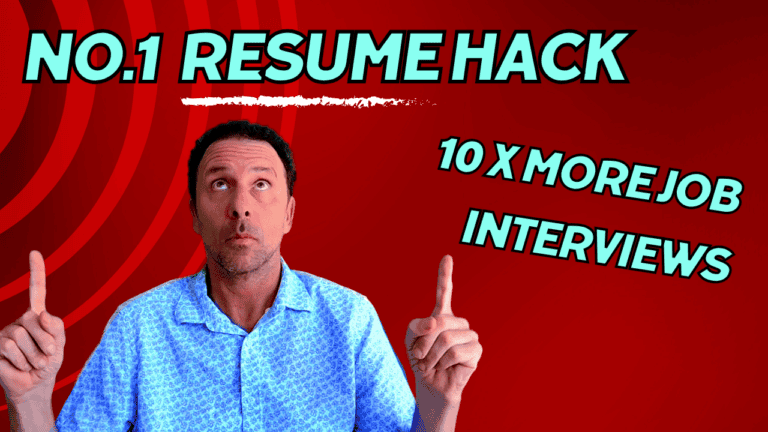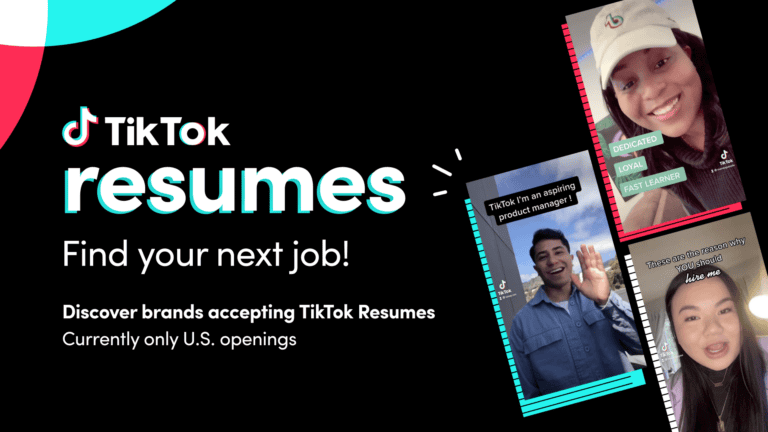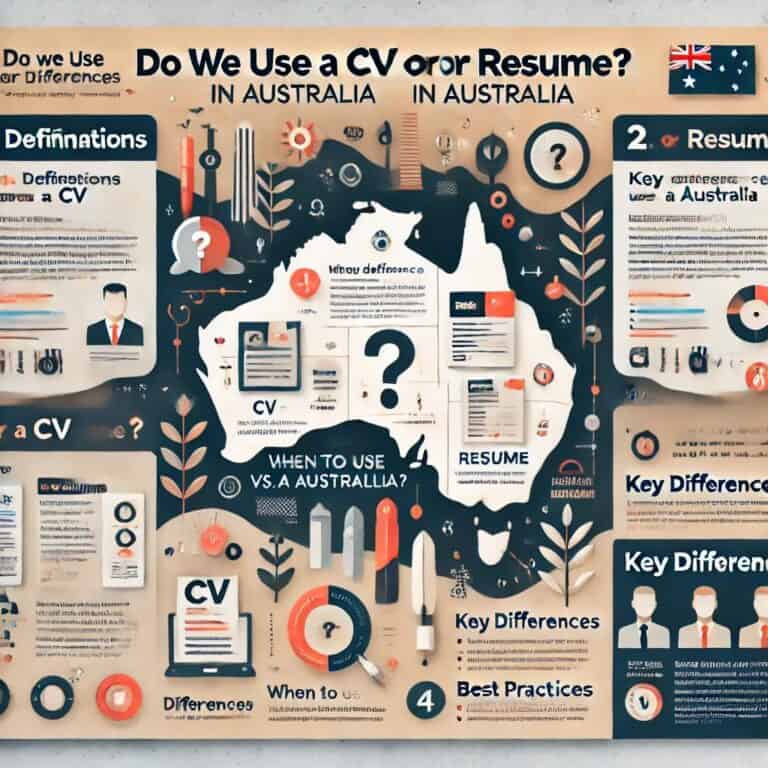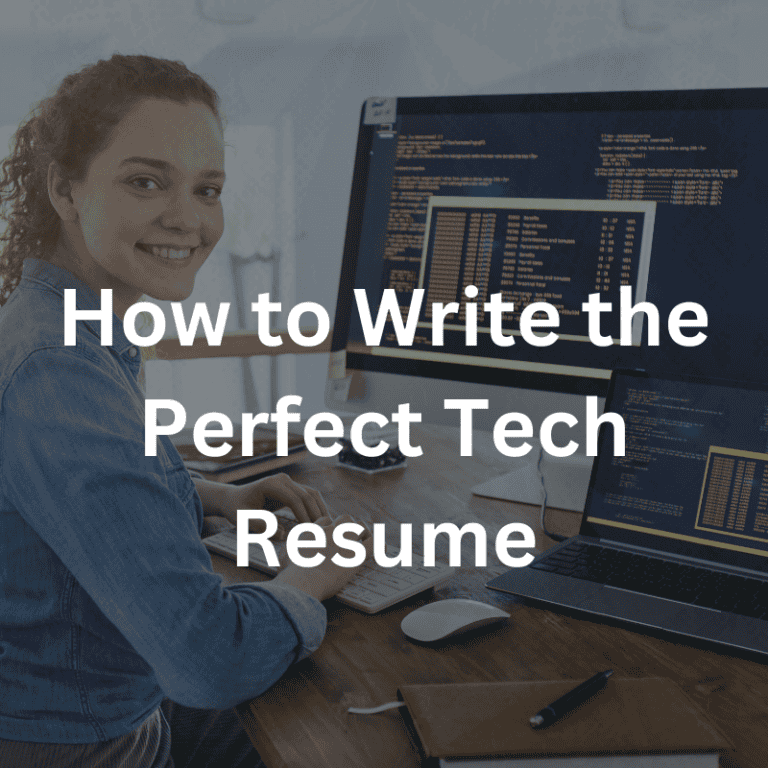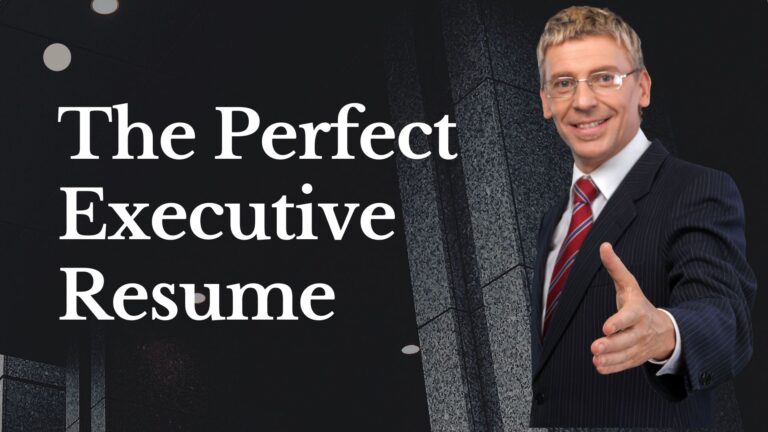How to Write a Sales Resume That Gets You Noticed
Gone are the days when sales professionals could pass from job to job based on word-of-mouth or personal connections. These days, despite all the latest developments in social media networking and AI, the moment you express interest in a role, the first thing you will likely hear is, “Please send in your CV/Resume.”
Top Tips
- Don’t just send any resume; you need a document that screams “hire me.”
- Use the STAR method as a structure for improving the resume content.
- Focus on targeted content to get you maximum results.
Why the Use of a Resume Should Not Be Underplayed
Think you can get away with submitting a rough overview of your background and leave the rest for explanation in an interview? You’re sorely mistaken. Resumes are an integral part of recruitment and will often be your first opportunity to introduce yourself. But more than that, the introduction needs to be first class to grab the reader’s attention. It’s a bit like a poster: centre-right message, and you will attract immediate interest; miss the mark, and you’re likely to spend your days wondering why the career world is passing you by and your pay cheque simply isn’t catching up with your retirement dreams. So don’t be fooled into thinking you can take shortcuts when it comes to writing your resume.
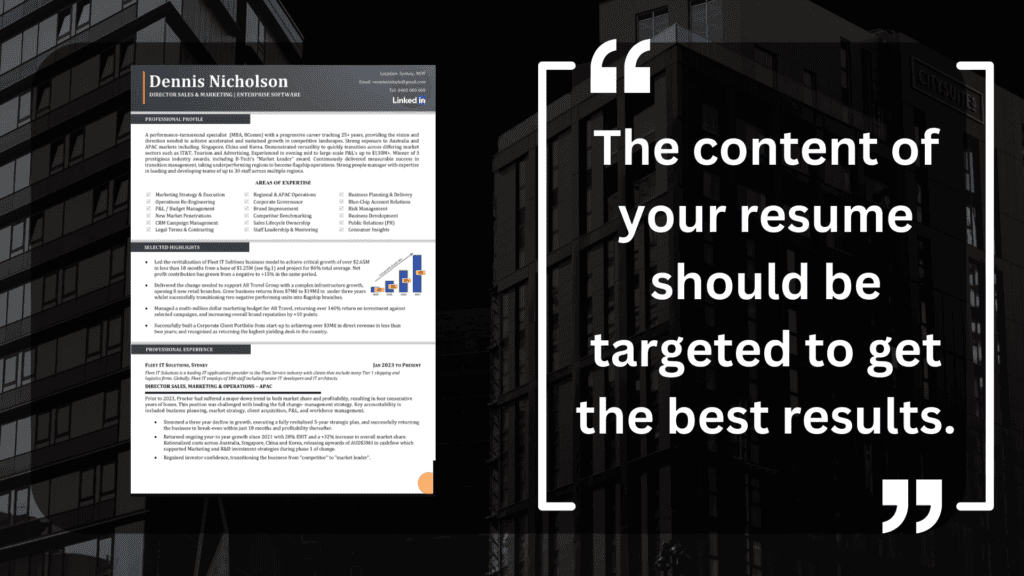
A Targeted Resume vs. Hybrid
Okay, let’s get one thing straight: when it comes to writing your resume, the “one-size-fits-all” approach is about as useful as wearing a winter coat in summer — it can be done, but if you think you look good, chances are that’s not what others are perceiving. In the recruitment world, there are two types of resumes: the targeted and the hybrid format resume. Spoiler alert: one works, and the other? Well, let’s just say it’s the resume version of “throwing spaghetti at the wall and hoping something sticks.”
A targeted resume is like that friend who always gets it right—tailored to a specific job or industry. It highlights your most relevant skills and experience, which makes hiring managers smile, or at least not toss your resume in the “No” pile immediately. For example, a sales resume should scream sales—achievements, customer relationship management, and any other fancy terms that make it obvious you know your stuff. It’s focused, it’s effective, and most importantly, it’s what the hiring manager actually wants to see.
And a hybrid resume? It’s like trying to be everything to everyone, which in most cases means you end up being nothing to anyone. Think of it like a sales manager resume that mentions part-time dog-walking experience—no one cares, in fact, it’s worse than that, people start to have doubts. What hiring managers are looking for is specific leadership experience and sales strategies, not some weird mix of unrelated skills.
So when in doubt, go for the targeted approach. Whether you’re writing a tech sales resume, sales engineer resume, or even an entry-level sales resume, specificity is what’s going to make you stand out. Tailoring your resume to the job ad and having a clear objective won’t just make an impact; it’ll keep your resume from being part of the “thanks but no thanks” stack.
Writing the Content – Where the Magic Happens, or Not
If you think “content is king” is a cliché, then you are not thinking like your audience. Because in recruitment, content is everything. But it’s about presenting your bio and your introduction as a brand that can drive results, beat the competition, and grow and strengthen relationships. No one wants to read War and Peace or wade through pages and pages of text. What you need to do is excite the reader, get them wanting to know more, and spell out why you are the best and the rest are quite simply “the rest.” After all, the likelihood is they are only going to employ one person.
So before you start typing away, think about who’s going to read this and what they want to see, not what you want to say. Keep the content focused and, above all, relevant to the intended audience and also interesting. Leave out the fluff. Show them you’re the person who drives results, not the person who’s going to blend into the sea of mediocrity.
The STAR Method – Because “I Increased Sales” is a Snoozefest
If you want your resume content to go from zero to hero, then we recommend you stick to the STAR method (translated to Situation, Task, Action, Result). This is a strategy all the most successful resumes use, and all the best resume writers incorporate. The STAR method uses real-world statistics and data to get the reader chomping at the bit.
For example, instead of “Increased sales” (yawn), say, “Faced declining sales in Q1 (Situation), took responsibility for developing a new sales strategy (Task), implemented a targeted marketing campaign (Action), achieved a 20% increase in sales (worth $1.4 million) by Q3 (Result).” See the difference? One is a vague statement, and the other is a story with concrete evidence that makes you look like you know what you’re doing.
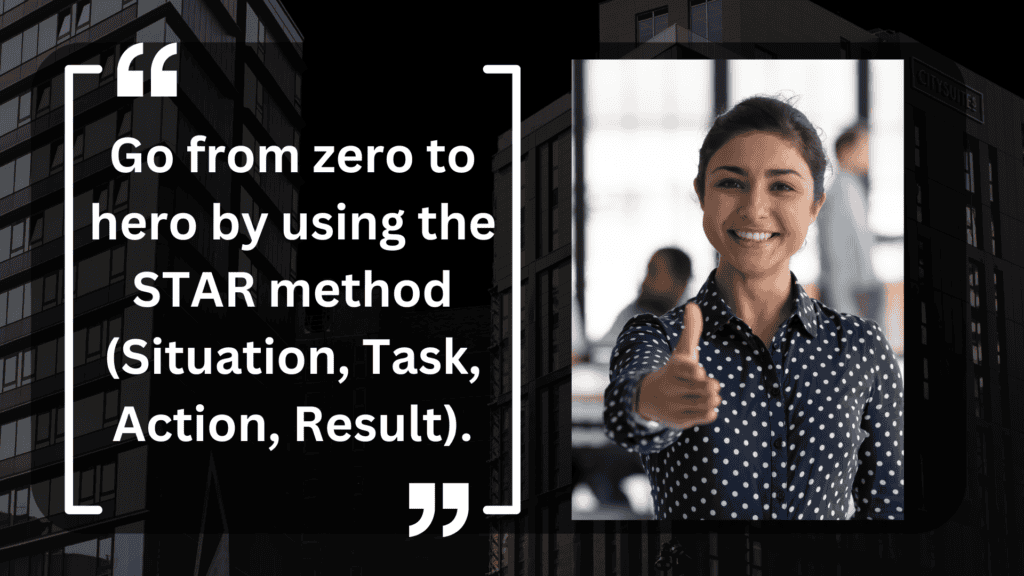
Use Specific Headings – Let’s Not Make the Recruiter Work Too Hard
Recruiters are busy. You’ve got maybe 10 seconds of their attention before they toss your resume aside. Make it easy for them by using clear, relevant headings. They should be able to scan your resume and see immediately how your job title matches what they’re looking for. If your headings are confusing or too generic, expect to be ghosted.
Pro tip: Applicant Tracking Systems (ATS) love clear headings too. Keep your sections organised and straightforward – things like “Work Experience” and “Education” should be obvious. Don’t make recruiters dig for the details.
Use Attention-Grabbing Headlines
We cannot emphasise enough just how important it is to use headlines in a resume. The principle is the same as you would see reading a newspaper or an article: headlines are used to draw the attention of the reader. Use eye-catching statements that can quickly sum up your unique value proposition and tell the reader exactly where you are and what you are targeting in the market.
Are headlines the same as position titles? No, a headline typically sits under the person’s name and gives a quick and clear indication of their expertise, such as “James Davis | Regional Sales Manager – Digital IT Solutions.” See how this title quickly grabs the reader’s attention? If your headline is vague or boring, you’re basically telling hiring managers “I’m just like everyone else.” And we both know you’re not.
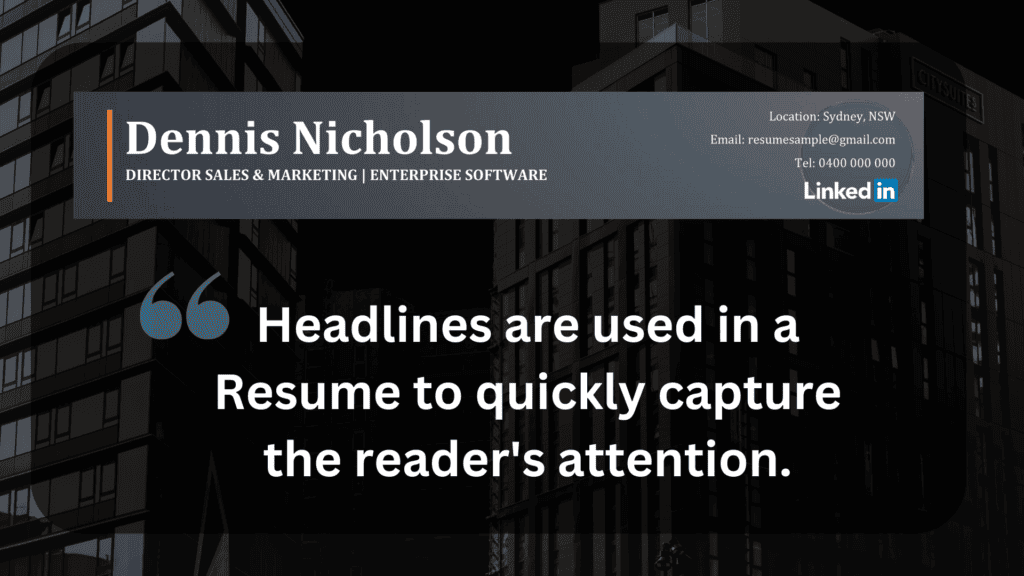
Drop Company Names in the Content
If you’ve worked with big companies or clients, dropping those names can be a great power move. Mentioning a well-known company you’ve worked with can grab attention and show you have the experience and connections to back up your claims. For example, if you are targeting Dell, then why not start dropping some client names that you know they are interested in connecting with? This works especially well in industries like sales, insurance, and digital marketing where who you know is just as important as what you know.
Add a Skills Box – Because Sometimes Bullet Points Speak Louder Than Words
A skills box is like a cheat sheet for busy recruiters. Add a section with 12 to 16 bullet points that highlight your most relevant skills. But don’t be lazy – no generic “hard worker” or “team player” nonsense here. Focus on technical skills and specifics that relate directly to the job. Also, consider going one step further and adding real technical elements such as “Salesforce CRM,” “SaaS & IaaS Products,” and “APAC Regional Exposure.” Need inspiration for ideas? It’s easy; simply collate a bunch of job ads and look for the keywords in those advertisements.
Show Off Your Achievements with Style
If you’ve got achievements that deserve special attention, give them their own section. A separate Achievements section on the first page lets hiring managers see the best of the best at a glance.
Whether it’s smashing sales targets, leading successful product launches, or driving growth, this section can make your resume stand out. It’s a curated highlight reel that can make a big difference.
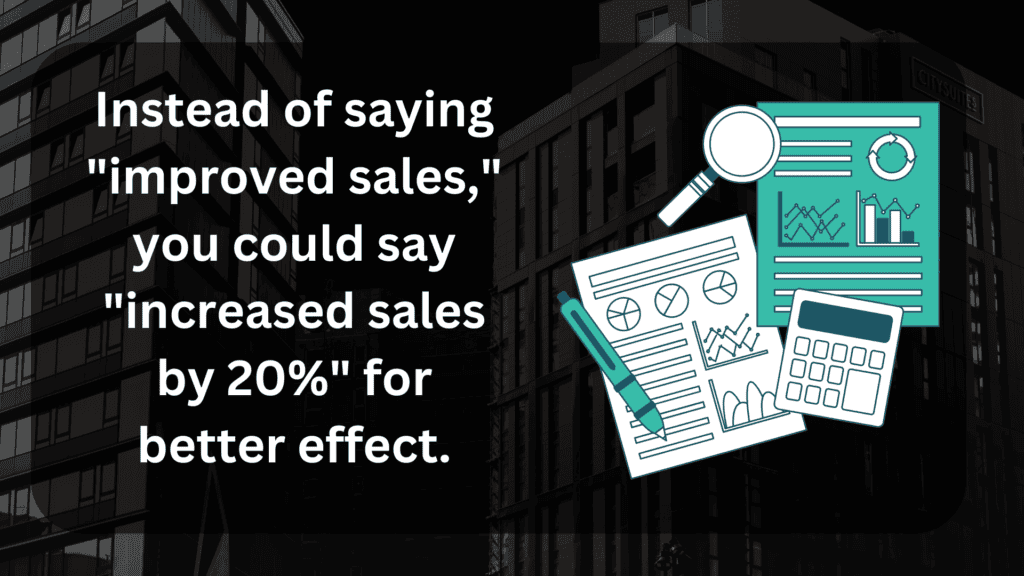
Include Specialist IT Knowledge – Show Them You Can Work the Tech Magic
If your sales role required the use of tech or software, don’t just mention it in passing—give details. Don’t just say “Familiar with CRM software.” Instead, say something like “Used Salesforce to increase customer retention by 15% over 6 months.” This shows you don’t just know the tools; you know how to use them to get results. Adding certifications or technical sales training is a good way to further stand out from the crowd.
Consider a Photo – Show the Face Behind the Numbers
Yes, it’s okay to include a photo—as long as it’s a professional one. A well-chosen, polished photo can make you more memorable and humanise your resume a bit. In roles like sales, where personal presentation is key, a good photo can give you a small edge.
Make Sure It’s ATS-Friendly – Bots Rule the World
If your resume isn’t ATS compliant, it might never see human eyes. These systems are smarter than you think and can analyse more than just a few keywords. They look at how you phrase your achievements and may even consider your LinkedIn profile. Make sure your resume is formatted correctly and uses the right keywords so it doesn’t get filtered out before it’s even read.
Include References? Nah. Name Drop? Maybe.
There’s no need to include references on your resume – they’re usually checked at the final stages anyway. Instead, create a separate reference sheet. And please, for the love of all things professional, don’t put “References available upon request.” It’s a given and takes up space where your achievements should be.
Need help with your Resume?
A Results-Driven CV & Resume Writer
- 98.8% Success rates across all markets
- 25 years market knowledge
- A personal one-to-one approach
- We guarantee our work
And finally…
Writing a great sales resume is about the right content, using the right strategies like the STAR method, and making sure it is headline-grabbing. By tailoring your resume to the job, highlighting your achievements, and keeping it brief, you can create a powerful document that differentiates you from the rest. Remember, your resume is your personal sales pitch – make it count. If you need help, the consider hiring a resume writer.
